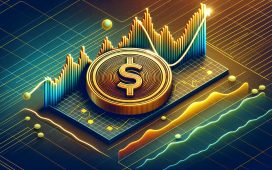In a recent report by Capriole Investments’ Charles Edwards explored the Federal Reserve’s ever-expanding war chest and its potential implications for the Bitcoin and crypto market. As Bitcoin gears up for its halving in April 2024, a pivotal event that will make it scarcer than gold, understanding the macroeconomic environment becomes crucial.
Why Macro Matters For Bitcoin And Crypto
Edwards underscores the inherent interconnectedness of global markets, asserting, “Bigger markets drive smaller markets.” This symbiotic relationship is evident in the crypto realm, where altcoins’ performance is closely tethered to Bitcoin’s movements. Drawing a parallel with traditional markets, Edwards elucidates, “Bonds drive equities, equities drive Bitcoin and Bitcoin drives altcoins.”
Contrary to the prevailing sentiment of an impending recession in 2023, the equities market defied expectations with a robust rally. This surge was not arbitrary but was propelled by the groundbreaking integration of usable AI, which has the potential to significantly augment GDP. Edwards directs attention to the NAAIM Exposure Index, a barometer of NAAIM managers’ equities exposure. The current readings of this index are reminiscent of those in June and October 2022, both of which signaled local bottoms for the S&P 500.
Furthermore, the AAII sentiment survey results, which are currently moderate, could provide a more convincing buy signal if they align with the NAAIM Exposure Index. Another metric that Edwards holds in high regard is the Put/Call ratio. This ratio offers insights into the relative bullishness or bearishness of market participants in the options market. A recent spike in this ratio suggests that the traditional finance market might be on the cusp of a near-term upward movement, Bitcoin and crypto could follow.
However, Edwards tempers this optimism with a note of caution. For a more definitive bullish signal, the S&P 500 would need to breach and sustain above the pivotal monthly resistance level at 4600. A consistent performance above this threshold would dispel any notions of a transient “dead-cat-bounce.”
Macro Fundamentals: A Mixed Bag
The broader macroeconomic picture presents a mosaic of varying hues. The aggressive tightening cycle, a hallmark of the Fed’s recent monetary policy, is still being assimilated by the markets. With the reservoir of household savings accumulated during the Corona stimulus years now running dry, a consequential contraction in consumer spending is on the horizon.
Edwards shines a spotlight on a couple of particularly disconcerting metrics: a marked decline in manufacturing, a sector whose downturns have historically been harbingers of recessions and consumer spending, which has not only dipped below its 20-year average growth rate but has done so at an alarming velocity.
Other red flags in the US economic landscape include a relative rise in the cost of living as income growth, at a meager 1% annually, lags behind inflation; an unprecedented credit card debt mountain of $1 trillion; escalating delinquency rates; and a squeeze on net worth as housing prices wane in the face of dwindling demand.
Yet, despite these ominous signs, the robust employment rates render any immediate proclamations of a recession premature. Edwards emphasizes the significance of the “initial claims” metric as a bellwether for unemployment trends.
However, the integration of AI into the workforce is not just a technological marvel but a potential economic game-changer. Edwards, drawing from personal experience, notes a 50% surge in productivity with AI’s aid. He references a statement by Sam Altman, CEO of OpenAI, which projects that in the near future, a single programmer, with tools like ChatGPT and Copilot, could rival the productivity of 20-30 of today’s programmers.
The Fed’s War Chest
Aware of the looming economic uncertainties, the Federal Reserve has been bolstering its defenses. The unprecedented rate hikes, catapulting interest rates from zero to 5% in a mere year, coupled with a contraction in the money supply rate, have engendered the most stringent economic conditions ever recorded that has been weighing heavy on tradfi, Bitcoin and crypto.
The Fed’s dual strategy of high interest rates, which provide leeway to slash rates during crises, and its recent success in paring down its balance sheet by a whopping $1trillion, are central to its defensive posture. Edwards speculates on the timing of the next QE round, suggesting that given the impending election year, the Fed might be compelled to deploy its liquidity arsenal sooner than anticipated.
Given the current macroeconomic tableau and the 90% of rate hikes already factored into the market as per the CME FedWatch, Edwards posits that the Fed might be compelled to infuse liquidity in the imminent future, especially if indicators like rising unemployment or plummeting consumer spending manifest. What will happen then should be clear to everyone: risk assets like Bitcoin and crypto will rally, aligning perfectly with the BTC halving.
At press time, BTC traded at $26,015.

Featured image from iStock, chart from TradingView.com










